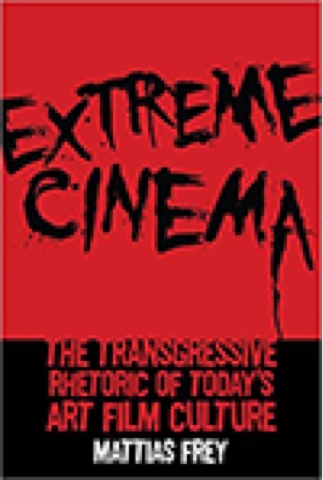Extreme Cinema is an academic study of the relationship between "bold" filmmakers and the art houses and critics that embrace their movies, which may or may not be a direct and perhaps subconscious collusion whereby the Directors are making exploitive cinema to be acknowledged by the film festival circuit and the programmers and press, who subsequently create that market where by a film that may or may not be art, since that is subjective, launches careers and make money. It is quite interesting. Many examples are cited here from Hong Kong and Japanese cinema to Eastern European and influential North American filmmakers from David Cronenberg to Vincent Gallo. The influence of transgressive cinema on mainstream cinema is also explored as well as the failure of the MPAA's NC-17 rating to distinguish such films from X-Rated films that gradually became the realm of hardcore pornography regardless of the fact that when NC-17 was instituted, the use of the X to rate a film was no longer recognized by the MPAA. Despite a few films released through smaller distribution companies, the NC-17 rating failed because movie theaters in mass refused to screen any film with that rating and the distributors caved in.
One might say that the proliferation of PG-13 properties based on franchises that were once considered more Adult and therefore would require the presence of a parent or guardian accompanying a person under the age of 17 in order for that person to enter. Yet films produced that appear to have an exploitive context whether it is in sexuality or violence or both have become more common because of the perhaps hypocritical, (depending which side you are on), labeling that states one film is substantial and offering a viewpoint that needs to be nurtured and this other film does not. Tate book also shows how commercial cinema uses the advertising techniques of their arguably more challenging counterparts in order to sell a movie to the public.
According to the Merriam-Webster Dictionary, the transitive verb for the word "transgress" states that it is to go beyond the limits set or prescribed or to violate and pass beyond or go over a limit or boundary. So through transgressive cinema we are assaulted in a passive or submissive partnership between the audience and the filmmakers. Yet this is all so subjective in nature that all the examples and studies in the world cannot in my humble opinion find a resolution to the fact that art does not have to be pretty and no one has the right to declare what art is. Yet we know what we like and are swayed by public opinion and that ultimately is where I feel Extreme Cinema: The Transgressive Rhetoric Of Today's Art Film Culture enlightens the reader by example, but like an ink blot test or even defining beauty, it ultimately is in the eye of the beholder.
Film Scholar and Author Mattias Frey has given film connoisseurs a text book worthy of examination and may even inspire self examination on a case by case basis. Extreme Cinema: The Transgressive Rhetoric Of Today's Art Film Culture is now available in both hardcover and softcover as well as digitally available at online retailers and in the case of the hard copies, offline retailers courtesy of Rutgers University Press.
(C) Copyright 2016 By Mark A. Rivera
All Rights Reserved.

